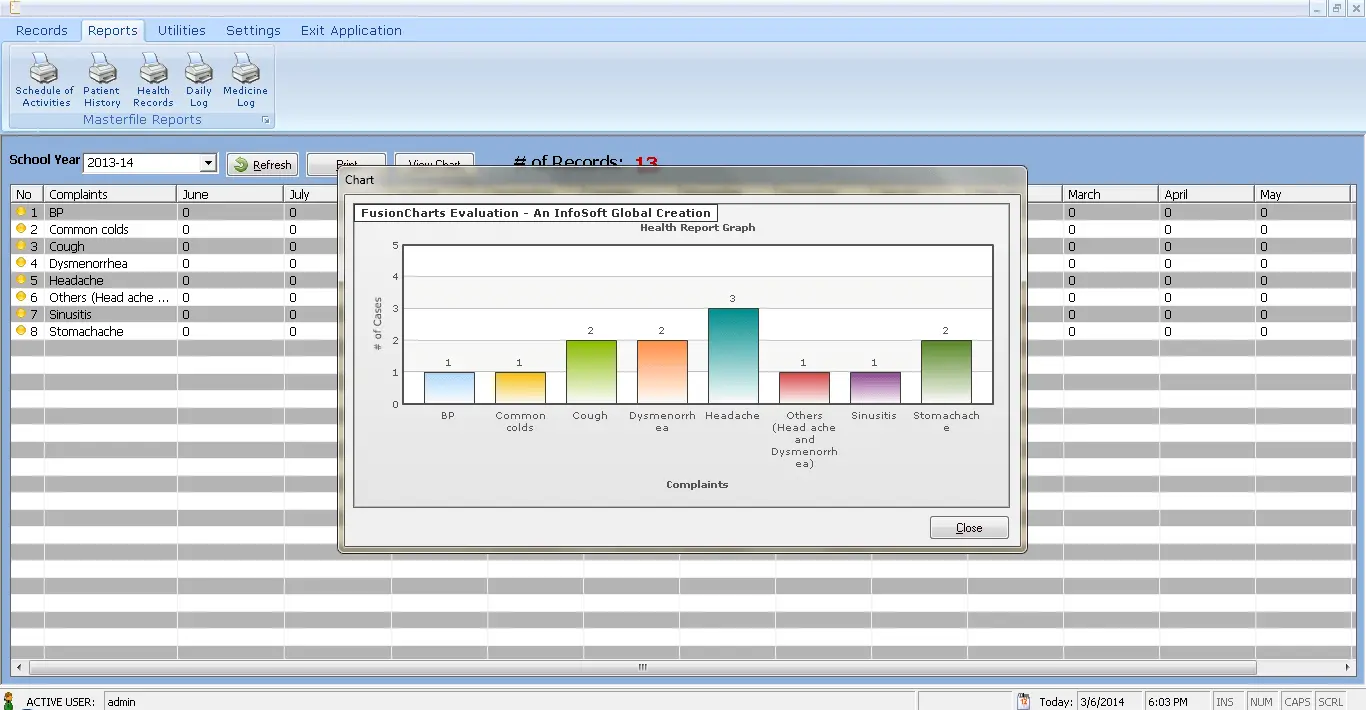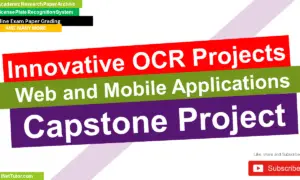Dental and Clinic Information System Review of Related Literature
CHAPTER II
REVIEW OF RELATED LITERATURE/SYSTEM
This chapter presents the list of related literatures, studies and systems that will serve as a guide for the researchers/developers to develop the dental and clinic information system
Related Literature
“ELECTRONIC DENTAL RECORD USE AND CLINICAL INFORMATION MANAGEMENT PATTERNS AMONG PRACTITIONER-INVESTIGATORS IN THE DENTAL PRACTICE-BASED RESEARCH NETWORK” (Titus Schleyer, et al.)
Results
According to the study, a total of 729 (73.6 percent) of 991 P-Is responded. A total of 73.8 percent of U.S. solo practitioners and 78.7 percent of group practitioners used a computer to manage some patient information, and 14.3 percent and 15.9 percent, respectively, managed all patient information on a computer. U.S. practitioners stored appointments, treatment plans, completed treatment and images electronically most frequently, and the periodontal charting, diagnosis, medical history, progress notes and the chief complaint least frequently. More than 90 percent of Scandinavian practitioners stored all information electronically. A total of 50.8 percent of all P-Is, were willing to reuse EDR data for research, and 63.1 percent preferred electronic forms for data collection.

Review of Related Study
“THE ELECTRONIC MEDICAL RECORD AND THE FUTURE OF DENTISTRY”
According to Bruce Lieberthal, DDS, director of Product Management for Henry Schein Practice Solutions the Electronic Medical Record (EMR) is an integral part of the medical standard of care—today and in the future. EMR is sometimes referred to as Electronic Dental Record (EDR) or Electronic Health Record (EHR). This key feature guides you through clinical record-keeping in a standard SOAP format (subjective, objective, assessment, plan). It allows key patient information to be centralized— demographic, medical/dental, social and financial— all within your practice management software. EMR eliminates multiple paper charts and provides controlled, secure and instant digital access to comprehensive information. Some EMRs incorporate a range of supporting technologies to become a fully integrated component of the practice management software, thereby allowing even more access to vital information at the point of care. This information is accessible from any secure workstation, so there are no interruptions during the patient visit to retrieve information. Everything is at your fingertips.
The Evolution of EMR
EMR has evolved from just an idea in the 1960s into a technical application that is changing the way the medical and dental fields operate. Increasingly the EMR is viewed as a mechanism to address patient safety issues and the storage, transfer and security of medical information. HIPAA compliance is paramount to the successful implementation and adaptation of EMR. Government regulations and public policy indicate that the adaptation and implementation of Health Information Technology (HIT) set the foundation for healthcare reform. Leading the way for reform is EMR’s universal use. The Department of Health and Human Services projects that the majority of Americans will have an electronic medical record by 2014; the federal government is also set to make EMR a mandated practice in health care sometime between 2011 and 2014.
“HISTORY OF MEDICAL/ELECTRONIC RECORD KEEPING”
Base on the author of www.krm.com/aaoms, historically the patient medical record has required significant time to complete and has been almost exclusively on paper. This paper-based diary has logged medical events as they occur, along with patient data in various charts and forms. In the 1960s, a physician named Dr. Lawrence L. Weed first described the concept of computerized, or electronic medical records. Weed described a system to automate and reorganize patient medical records to enhance their utilization and thereby lead to improved patient care. Dr. Weed’s work formed the basis of the PROMIS project, started in 1967 at the University of Vermont; it was collaboration among physicians and information technology experts, to develop an automated EMR system. The objectives were to develop a system that would provide timely and sequential patient data to the physician, and enable the rapid collection of data for epidemiological studies, medical audits and business audits. The group’s efforts led to the development of the Problem-Oriented Medical Record, or POMR. In 1970, the POMR was used in a medical ward of the Medical Center Hospital of Vermont for the first time. At this time, touch screen technology had been incorporated into data entry procedures. Over the next few years, drug information elements were added to the core program, allowing physicians to check for drug actions and interactions, dosages, side effects, and allergies. Diagnostic and treatment plans for over 600 common medical problems were also devised. During the 1970s and 1980s, various academic and research institutions refined electronic medical record systems. The Technicon system was hospital-based, and Harvard’s COSTAR system had records for ambulatory care. The HELP system and Duke’s “The Medical Record” are examples of early inpatient care systems. Indiana’s Regenstrief record was among the earliest combined inpatient and outpatient systems. During the technical boom of the 1990s, advancements in computer and diagnostic applications helped spur the growth of electronic medical record systems in medical practices.
“Electronic Patient Records for Dental School Clinics: More Than Paperless Systems”
(Jane C. Atkinson, D.D.S.; Gregory G. Zeller, D.D.S., M.S.; Chhaya Shah, B.A.)
The Electronic Patient Record (EPR) or “computer-based medical record” is defined by thePatient Record Institute as “a repository for patient information with one health-care enterprise that is supported by digital computer input and integrated with other information sources.” The information technology revolution coupled with everyday use of computers in clinical dentistry has created new demand for electronic patient records. The benefits, particularly for large clinical institutions, are obvious: improved record control, easier document storage and access, better information for clinic management, and excellent data for evaluation of overall patient care. Ultimately, the EPR should improve health care quality. The major short-term disadvantage is cost, including software, equipment, training, and personnel time involved in the associated business process re-engineering. A recent estimate from the Council on Competitiveness is that the full cost of implementing a fully integrated health information system is 7.5 to 13.5 percent of a clinic’s annual budgeted revenues. That percentage may be higher for a typical dental school clinic in which true operating costs grossly exceed yearly revenues.
“Abbreviated History of Electronic Patient Records in Medicine”
According to this study, one of the biggest challenges for developers of electronic medical records is the integration of narratives (all qualitative and semi-quantitative data gathered by physicians). Ideally, the EPR should integrate descriptive clinical notes, dictated summaries, letters to referring professionals, progress and procedure notes (including operative notes), and supporting reports from pathology and clinical laboratories. This process is much more complicated when the data is narrative text rather than categorized as a data element. The development of the EPR started in the late 1960s.Early systems such as the Problem-Oriented Medical Information System (PROMIS) from the Medical Center Hospital of Vermont structured the record according to a patient problem list using a SOAP (subjective, objective, assessment, plan) format. The system guided physicians through a structured eight-step format, which users complained was dogmatic. This problem ultimately led to the demiseof the system.
http://citeseerx.ist.psu.edu/viewdoc/download?doi=10.1.1.111.3748&rep=rep1&type=pdf

Synthesis
Due to manual process, some significant errors cannot be avoided. The automation of medical and dental records is a kind of system that will help to alleviate the said problems and increases performance of medical personnel. It provides guidance and support decision to prevent errors and effectiveness of services. This system can also provide easy data retrieval, record keeping, a quarterly and annual graphical report of health record report that is needed for decision making and a real time records for the management. With the presented literatures and studies together with the implementation of this system could help the dental and medical clinic of the institution for this could assist the organization to make new involvement and health programs that give exact and valuable services that are system supported decisions.
You may visit our Facebook page for more information, inquiries, and comments. Please subscribe also to our YouTube Channel to receive free capstone projects resources and computer programming tutorials.
Hire our team to do the project.


